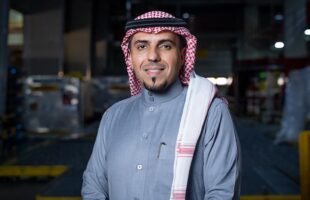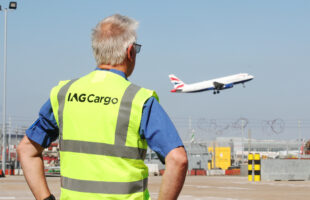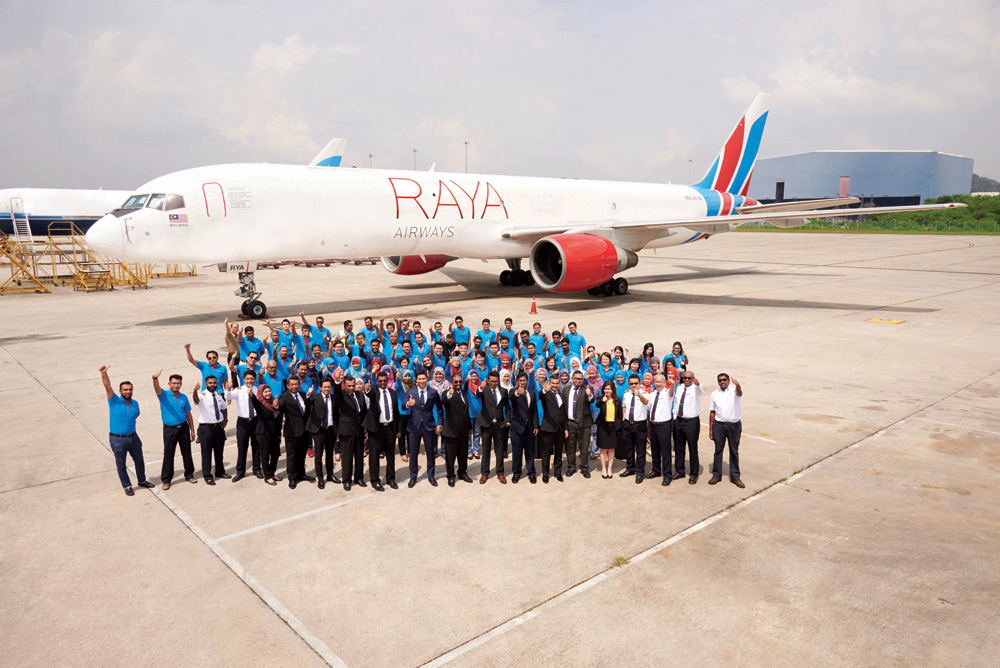
Having recently taken delivery of its first dry-lease B767F in early March, Subang, Malaysia-based Raya Airways (the former Transmile Air Services) is now setting off on a carefully-charted expansion plan that will see its fleet grow to six aircraft and new services to Japan, China, South Korea and India by year-end.
“We are very much a Southeast Asian-targeted, regional airline, but we have aspirations to go beyond that,” says Raya’s commercial director, Lee Shashitheren speaking to media in Berlin recently.
Specifically, in the near term this means Mumbai and Delhi, with an option for Bangalore, Shanghai in China, Narita in Japan and Incheon in South Korea. And by the end of next year the carrier plans to have a fleet of nine aircraft facilitating the opening of new routes and additional services to Thailand, Vietnam, Cambodia, Indonesia and Bangladesh while adding frequency to Hong Kong and Singapore.
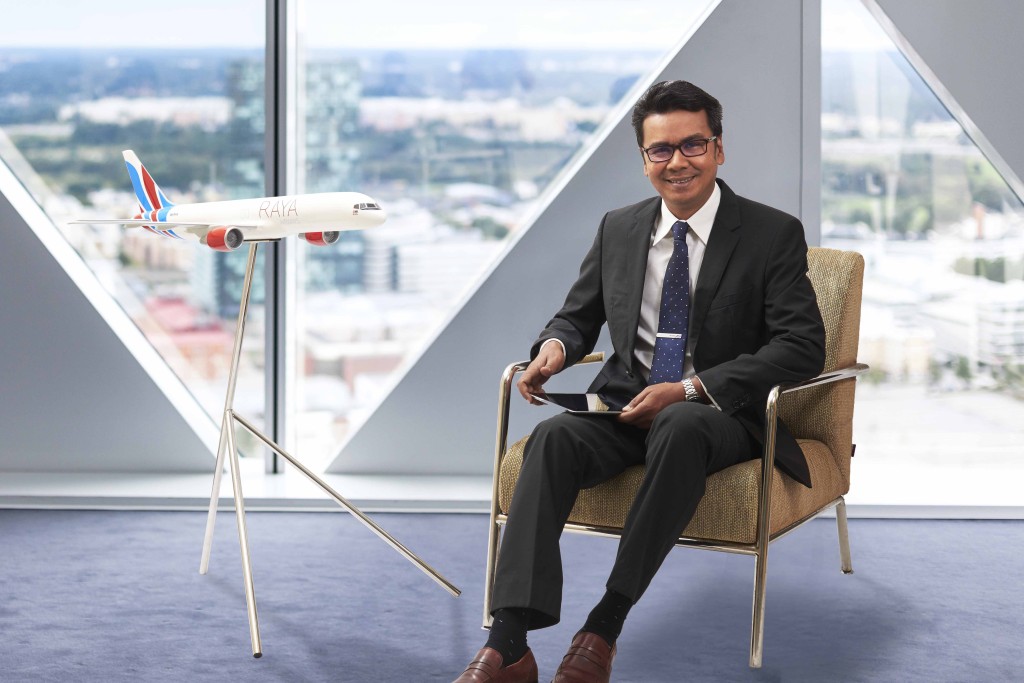
The carrier already operates flights into Hong Kong which covers the Pearl River Delta region, alongside Singapore, Labuan, Kota Kinabalu and Kuching in West Malaysia, as well as, Jakarta and the Vietnamese cities of Ho Chi Minh City and Hanoi. These destinations are operated with its current fleet of three B727-200Fs, one B757-200F and its newly arrived B767-200F.
MASkargo competition
Indeed, the juxtaposition of this growing maindeck player compared with much of the rest of the industry couldn’t be clearer than looking at Raya’s compatriot, government-owned, legacy carrier, MASkargo. The cargo division of Malaysia Airlines is undergoing route and maindeck fleet rationalisation as the group undergoes a massive restructuring exercise.
This rationalisation however, could well pit the two Malayasian carriers in head-to-head competition as MASkargo’s new remit becomes one of an extended-regional player from India across to China using its own metal and strategic partnerships for other longhaul markets.
“I won’t deny there isn’t an impact, but whether positive or negative that is still a question to be answered. In my opinion it’s a mix because whenever my MASkargo stops a particular route it creates a gap and that gap will somehow be filled, but how it is filled is another question.
“Are we going to be the ones that fill that gap, I don’t think so, not in the immediate future because their network is very large and we are not up to speed to be there today. So somebody else is going to fill those gaps and when somebody else fills those gaps are we capable of going back and and getting it back, that’s another question,” Lee notes.
Of course the flip-side to all this is the situation where MASkargo cancels a route where Raya already has a service, or is positioned to enter. But bearing in mind MASkargo’s refocusing on the region with its A330Fs and belly capacity, it would seem that more often than not, the two Malaysian carriers will be face-to-face in many markets.
Lee’s answer – limited in its options – is none-the-less predictable: “We welcome competition.” He does however go on to provide some substance to it and even some options, citing the fact that a country such as Malaysia with two strong airlines will help foster a good logistics trade lane into and out of the country, as well as the hub needed to support it.
“In that way I think the industry will benefit and when the industry benefits the option for cargo moving via Malaysia is greater. We do have very able, strong competitors in the neighbouring countries so we need to look at it holistically and look at how we as a component in the Malaysian industry are going to benefit by this competition,” he said.
And he adds that competition doesn’t necessarily have to be head-on, citing the possibility of discussing interlining with the state-owned carrier – doing routes that they are not doing, or sharing space on the routes that both are active on.
“We can explore how we can work together to focus on being a friendly competitor. I don’t deny that MASkargo’s recent strategy seems to have them coming head on with us and is going to have us standing on our toes, but I think the team at Raya is quite ready to face the challenge.”
Despite the fact MASkargo is state-owned, Raya has had the full support of the country’s aviation authorities who have treated both “very neutrally with no favouritism to MASkargo,” according to Lee.
The authority’s support for Raya’s expansion plans can be seen in the fact they were able to get the certification for B767 within two months – something that is not only incredibly fast, but “almost unheard of”, Lee notes. “That’s the kind of help that we’re getting from the authorities and we are very thankful and very appreciative of their help,” he added.
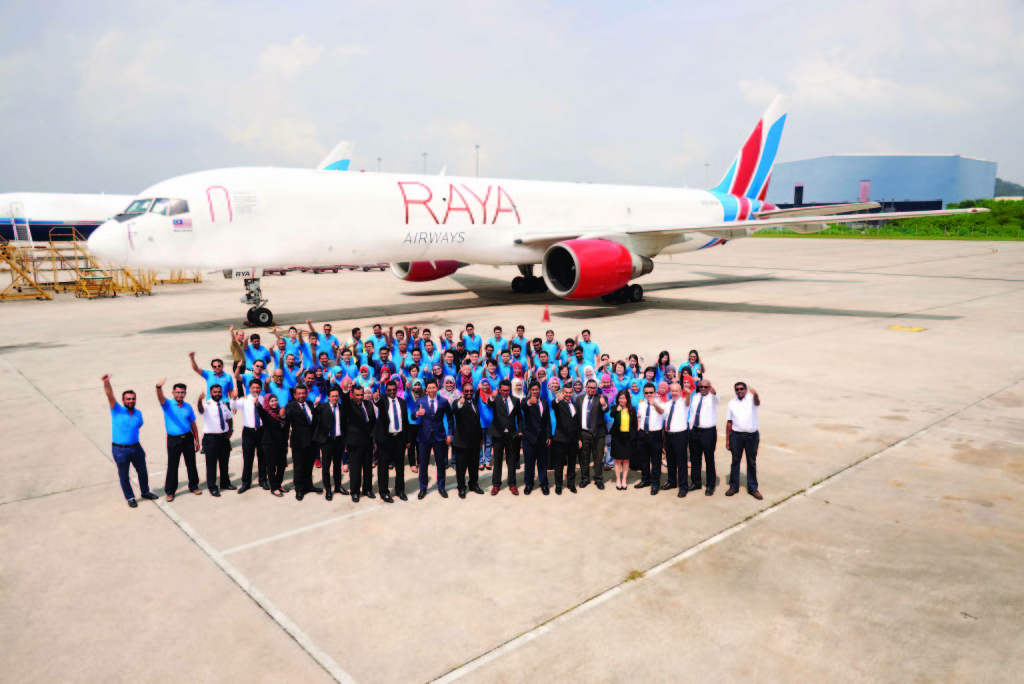
Fleet plans
As for Raya’s fleet, Lee notes that the original plan was to phase out the B727Fs and replace them with B757Fs or B767Fs. But this has proven to be challenging given the current market appetite for these two aircraft types given the surging e-commerce business that has been fuelling the express and integrator carriers.
“Because they are so hard to come by, it creates a necessity to retain the 727 for a while longer because we do need the aircraft to serve the destinations we are currently serving,” Lee added.
And while there are certain limitations with the B727F, only one of Raya’s destinations is off limits because of noise restrictions, that being Hong Kong. Most airports in Southeast Asia allow this sort of operation for an extended period and the aircraft is equipped with advanced navigational systems allowing it to fly into very advanced airports.
At least for now, Raya sees various value in keeping the B727Fs, especially with fuel prices being at historic lows. They also serve a purpose in being a spare aircraft in the case of an aircraft on ground situation.
Another key impetus for keeping them is Raya’s ability to maintain them. “When we took over the company it was very much built around 727 so the structure of the company is very much in tandem with keeping the 727s in operation.
“We have a huge stock of usable spares and facilities geared towards maintaining the 727 – so all these things were already there and it would be a waste not to make use of the capabilities that come with all that.
“So there is a good case for keeping those aircraft,” he said, adding that the aircraft would only be kept for a maximum of two more years.
“We do run into issues in terms of securing this aircraft type,” Lee says, noting that B757Fs are the preferred kind of metal for the integrators who were buying them by the 20s and 30s, he says. “The B767F also a very interesting aircraft,” he adds citing the recent announcement by Amazon/ATSG of an order for 20 of these aircraft.
“So we do see you crunch in terms of getting supplies.” But Raya is also quite heartened that many of those legacy carriers that have been operating B767’s are refleeting themselves, many opting for B787s and A350s as replacements. “That we believe will create availability in the market of feedstock for conversion.”
Adding to the limited feedstock, increasing demand from integrators, both of which are placing upward pressure on prices, Lee notes there is another adverse factor in the market – the legacy carriers.
“There is also a shift in the thinking of the legacy freighter operators as well, where instead of concentrating on B747Fs and B777Fs, they are also looking at B767F and B757Fs to better capture marketshare on short- and medium-haul roots they are currently serving.”
But Lee hastens to add that Raya’s plans are not targeting 30 or 40 aircraft – at least not at the moment, he says with a laugh.
Expansion plan
“We have aspirations of course, but not in terms of numbers – we are note interested in being a big numbers player, we want to be a profitable company and we want to make sure that whatever we do in terms of our expansion is done in a measured manner.
While noting the expansion plans are “not something that is carved in stone,” this is generally where the carrier wants to head. But he also highlights that getting more aircraft, doesn’t necessarily mean more destinations.
“We can have more frequencies, we can thicken links to make sure the right amount cargo in the right of frequency and adding the frequency provides the kind of service level the might desire. If I’m going to fly to a destination once a week, that may not be very tantalising, so we have to look at how to balance – what will be the right number for certain destination.
“We still need to grow in order to find the sweet spot in the equilibrium. We are running a number of calculations to determine what will be the sweet spot for us in terms of how many destinations we will need to serve, how many countries are we going to fly into to have the right mix of cargo, to have the right throughput in our hub and to be able to balance all the sectors we are flying out of our hub.
“We have a very clear target how many aircraft we are going to have before the end of this year, how many aircraft we are going to have next year and we are already talking to some wonderful partners who are able to assist us, support us towards this,” he said in reference to ATSG who provided the carrier’s first dry lease B767F. The way forward he adds, will be enabled by the B767 – either the -200 or possibly the -300, he said.
In the meantime, the benefit of this dry lease arrangement is that Raya can use the metal under its own registration, which opens ups a vast array of destinations. The carrier, which traces its roots back over two decades as a former part of the Transmile Group, benefits from very generous 5th and 7th Freedom Rights as one of six airlines in the country operating scheduled flights into countries having bilateral air agreements with Malaysia.
“One beautiful thing about this company is that it came with beautiful traffic rights, so we are going to utilise them,” Lee adds.
The first B767F also has advantages in that it will enable Raya to lean about the aircraft as it expands and also understand its capabilities/limitations in terms of the carrier’s future growth ambitions. The B757 and B767 have similar advantages, Lee adds, noting that the crew is interchangeable, the maintenance is quite similar and even the parts are to a certain extent interchangeable.
Business focus
As for the carrier’s focus, at present it is 100 per cent scheduled services, “but of course we do entertain charter queries, but that is not our bread-and-butter anymore.” Raya, he states clearly, is moving away from that model – although still willing to consider charter queries that come along – but clearly avoiding some of the pitfalls that the “previous iteration of the company” (read: Transmile) struggled with in focusing on charter as the main revenue source.
“I think we need to balance so that we don’t put all our eggs in one basket. We need to make sure there’s enough back for the company to continue to grow.” And this is where Raya’s anchor customer comes into the picture. With 50 per cent of Raya’s business coming from one very large customer – DHL – one could argue that’s an awful lot of yellow eggs in the basket.
Lee himself describes the dependency as “huge”, but adds that it is a “wonderful thing to have DHL, as it provides a lot of stability and calmness to our operation.” But with this stability also comes quirks, leading Lee to note: “We need to be able, as a responsible company to its shareholders and staff, to be able to look at this entire picture and decide how are we going to chart our course – not denying anybody anything, but saying hey look this is what I’m going to do.
“We appreciate the partnerships we have today the business is growing see a lot of potential in the partnership with DHL,” he adds noting that the pair are currently discussing a number of expansion routes. But crucially Lee hints that future cooperation won’t necessarily follow the current model.
How exactly this would look is unclear as it is still a work in process. It could mean DHL no longer charters the whole aircraft, leaving Raya to fly to a particular destination of its choice leaving DHL to evaluate whether it can support with tonnage on that route through a Block Space Agreement (BSA), for instance.
“We do at this point need additional destinations, so that will be the focus. There will come a time a year, to a year-and-a-half from now where we will be looking at adding new points to enlarge our presence in those markets that we are already in.”
Product specialisation
One area of interest – particularly with the India market is the pharmaceutical sector. But as Lee notes, the carrier knows where it is at and needs to build up its capabilities before it enters this specialised cargo sector.
“We need to build our capability to be able to provide the right service. There is no point going to the pharma market and saying yes I would like to grab a piece of the cake, but not being able to handle it. We know our strengths, we know our weaknesses and we are working on our weaknesses to make sure we are able to participate in all the types of cargo available,” he said.
“Of course once we decide we’re going to fly to a new destination we have to make a business case to make sure it works. This will include the whether there a potential premium cargo that is not being addressed at this moment and what is the best way of connecting the markets.
“There’s always opportunities in how we tailor the product, how we come up with a solution. We are going to look at A-Z and then come up with the proper plan and make a product out of it and this is what we are going to sell, we’re not going into a market like India and simply selling 40 tonnes of a cargo a week,” he added. Currently Raya’s model at its overseas stations is geared towards GSA’s until such a time that it feels that its own operations might serve it better.
One development now underway dovetails nicely with the push into specialised cargo. Raya is in the process of moving from its existing facilities at Subang Airport into Kuala Lumpur International Airport (KLIA) where, in Lee’s words, “the action is”.
“We are in discussions with the airport authority on the time line. So it gives an open platform for us to actually plan and build a particular type of service that would cater, not just for pharma, but all types of cargo that we wish to be experts in.”
The move out of Subang is the result of a government decision, as the airport has been re-designatd as an MRO and turbo prop centre with all of the jet operations supposed to be over at KLIA. But due to space restrictions at KLIA at the time, Raya were allowed to remain in Subang for a limited period of time.
While Subang is cheaper than KLIA, Lee notes that a cost-benefit analysis has shown KLIA to be better for Raya, in part because of the connectivity. The other advantage is that Raya is in discussions to secure an empty plot of land at KLIA’s Cargo Village.
“We are going to design and we are going to build the necessary capabilities in that terminal whether it’s cold room, whether it’s animal facilities, whether its dangerous goods etc.” This will completed three years from now, he added.
Added value
Also high on Raya’s agenda is to position itself not just as an airline, but an airline that can also provide additional services where the quality of the whole product can be controlled. “We want to have more say in controlling the quality of the product holistically from end-to-end,” Lee says.
While door-to-door delivery is definitely not in the cards, the carrier wants control over its ground handling system and being able to provide truck-flight services to off-line locations, being able to provide custom brokerage through its subsidiary and being able to provide additional services such as warehousing.
“This will increase our service offering and that will enable us to have better leverage on the control of the quality itself. The truck-flight services are only offered in Malaysia and Singapore currently due to various restrictions on licenses etc. Ultimately however, Raya aims to offer this across its entire network, either through a third party that is Raya-branded, or on its own.
“There’s not a big difference between what we are doing and a normal legacy airline would do, it’s not a big differentiator, but I believe this differentiator will be appreciated by the market,” Lee said.



